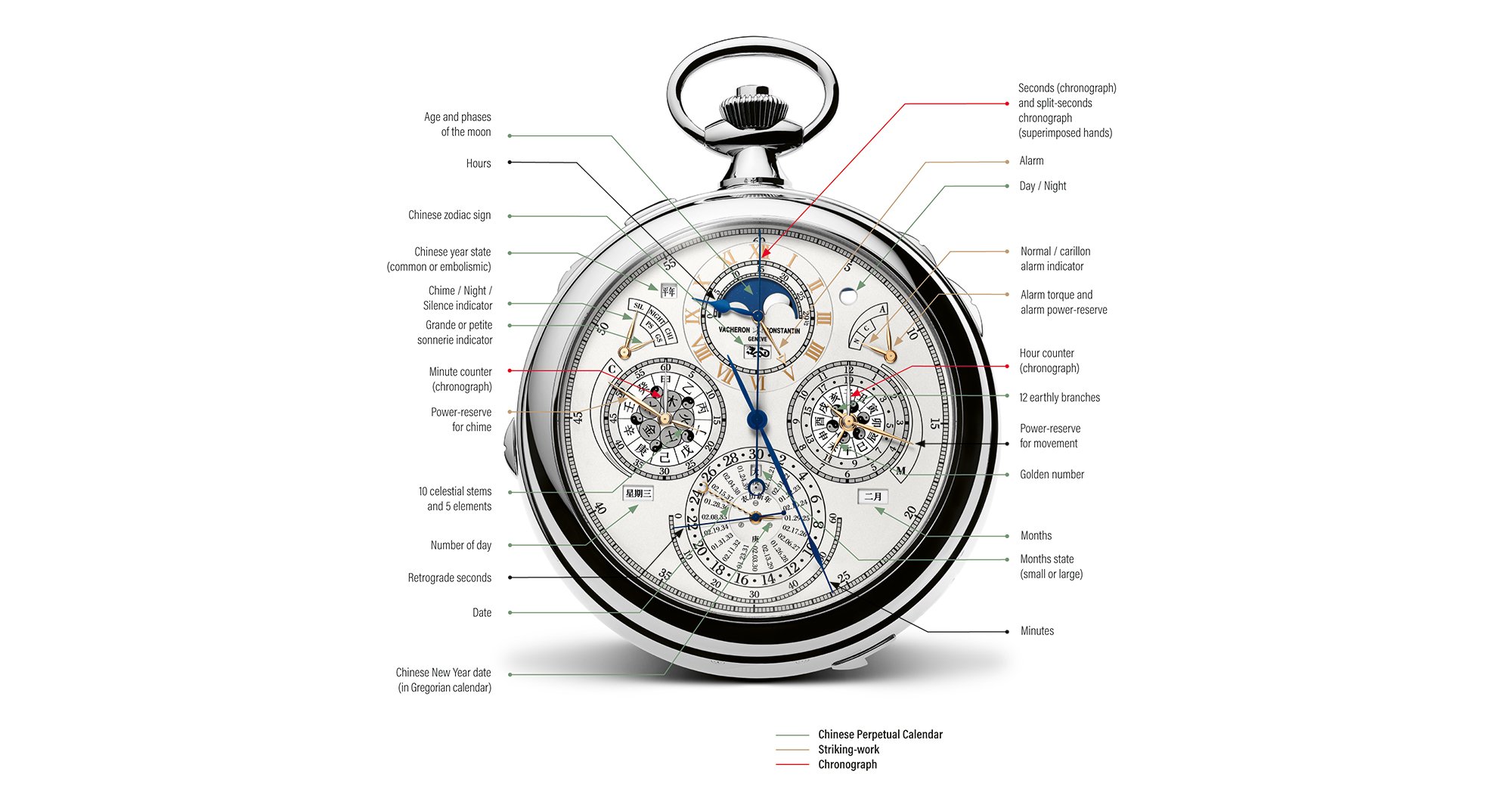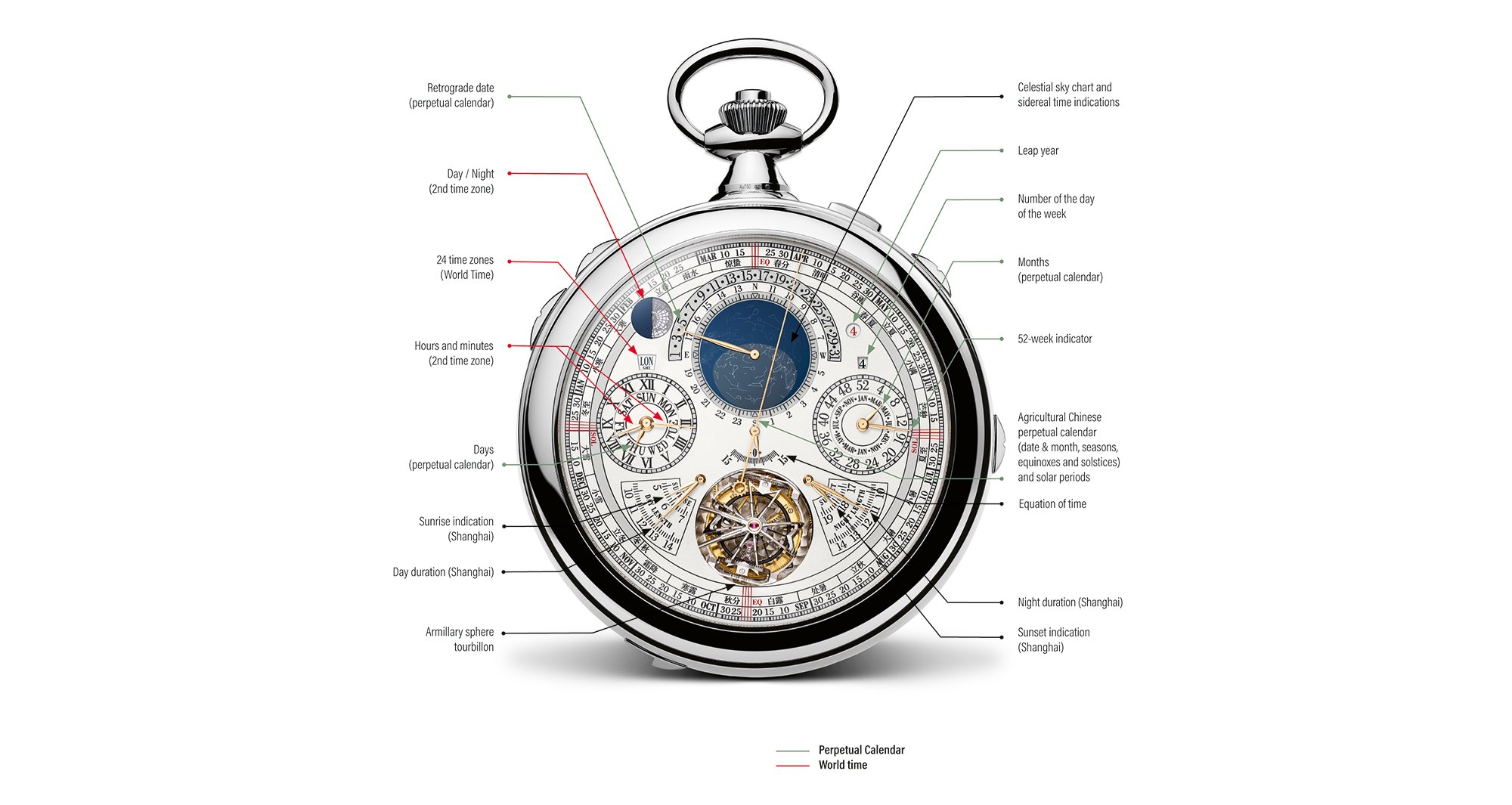t’s tempting to compare the watchmakers at Vacheron Constantin’s Les Cabinotiers to Penelopes who weave, unweave and reweave, day after day. The image comes into relief when we learn that it took an entire year solely to assemble the movement, first as a “trial assembly” to verify every detail, following which it was taken apart, decorated and assembled all over again. 2,877 components, 2,877 threads in a tapestry. And throughout this time, like a modern-day Ulysses, William Berkley waited patiently until journey’s end.
“The epitome of hyper-horology”
In fact, William Berkley and Vacheron Constantin embarked on this journey long before The Berkley Grand Complication saw daylight, with the conversations and commission that produced – after eight intense years - Reference 57260. Unveiled in 2015, it was, until now, “the world’s most complicated watch” with its 57 complications, including the first Hebrew perpetual calendar. It was during the making of Reference 57260 that William Berkley, bolstered by the trust and community of spirit that had grown between him and the three master watchmakers from Vacheron Constantin’s Les Cabinotiers department, challenged them to create a complicated watch that would incorporate the first ever Chinese perpetual calendar.
“This is the epitome of hyper-horology,” declares Christian Selmoni, Vacheron Constantin Style and Heritage Director. “One might have thought that Reference 57260 was the ‘last word’ in this field, but as we can see, it’s always possible to raise the bar and achieve what no-one has achieved before, namely a Chinese perpetual calendar that will require no correction until 2200.”
A cultural, conceptual and mechanical journey
To even begin to understand the complexity of the task, we can note that the traditional Chinese lunisolar calendar is composed of three irregular cycles: a nineteen-year Metonic cycle which includes the fluctuating New Year date; a sexagesimal cycle of 60 combinations and a solar agricultural cycle of one tropical year.
Without delving into the intricacies of this calendar – impossible within the confines of this article – Chinese calendar months are lunar and begin on the day of the new moon “calculated on the 120th meridian east (UTC +8) passing through the city of Hangzhou”. The average length of a lunar month is 29.53 days, hence Chinese calendar months are either 29 or 30 days long. This irregularity is corrected by incorporating a thirteenth intercalary month, every two or three years, over the Metonic cycle (named after the ancient Greek astronomer Meton) which extends over 19 years or 235 lunations, at the end of which the two systems, lunar and solar, are perfectly synchronised (6,940 days).

A further feature of the Chinese calendar is the fluctuating date of the New Year, an important social occasion, which falls between January 21st and February 21st.
The solar tropical year in the Chinese calendar, calculated on the same meridian, is divided into 24 periods of 15 degrees (a total 360 degrees) along the Sun’s ecliptic. Each period, alternately known as jie (node) and qi (vital breath), lasts around 15 days. This gives an average duration of 365 or 366 days, hence close to that of the Gregorian calendar.
To conclude this overview, the units of time in the Chinese calendar are numbered based on the association of two series of signs – ten celestial stems and 12 earthly branches – yielding a possible 60 combinations. This sexagesimal cycle is used to mark the passing of years, but also months, days and hours. In addition, the ten stems are associated with the five elements of wood, fire, earth, metal and water, and with a polarity: yin, the feminine principle, or yang, the masculine principle. As for the 12 branches, they correspond to the 12 signs of the Chinese zodiac.

In order to transcribe these extremely complex and interacting variables into a high-precision mechanism, the trio of master watchmakers first had to model the Chinese calendar as algorithms, which they then had to transpose into a mechanism programmed until 2200 and capable of following the irregularities of a calendar whose years and lunar months have different durations. They achieved this by devising three mechanical “brains” which, through a series of cams and gears, control two additional mechanisms on the front of the movement. These mechanisms drive the calendar’s various components, namely the lunar cycle, solar cycle and Metonic cycle of 19 years (the “golden number”). This information is displayed on corresponding dials and indicators.
The sexagesimal time scales of hour, day and year are shown by a jumping display of the ten celestial stems, with their yin-yang polarity, and a continuous display of the 12 earthly branches. The Chinese zodiac animal for the current year is silhouetted in an aperture under the display for the precision ages and phases of the Moon.
Also, the agricultural year’s 24 solar periods are indicated on the back by a central hand, along with the month lengths, seasons, solstices and equinoxes.
Then there are the traditional complications…
This is not the only feat of engineering far from it. The Berkley Grand Complication boasts a mindboggling 63 complications. For the “Chinese” part alone, there are 11 complications for the perpetual calendar, two for the agricultural perpetual calendar and five astronomical indications which have been specifically calibrated for Shanghai, including a sky chart. As for the rest, in addition to the full array of time measurement indications, which include world time in 24 cities, a second time zone and a engraved polar azimuthal projection, the Berkley Grand Complication features a Gregorian perpetual calendar with an indication for the week of the year; a split-seconds chronograph with three column wheels; an alarm function with its own gong; a Westminster Carillon striking on five gongs with grande and petite sonnerie passing strikes; a minute repeater and an ingenious night mode, thanks to which the owner can set the watch to silent during the hours of his choice. Not forgetting the nine astronomical indications, from sidereal time to the equation of time, additional indications, a winding system for the two barrels and a concealed winding crown for the alarm.
All these mechanisms are regulated by a triple-axis armillary tourbillon, named in reference to astronomer and watchmaker Antide Janvier’s moving sphere with an armillary planetary gear system. This regulator is fitted with a spherical balance spring and runs at 2.5 Hz or 18,000 vibrations/hour - which enables the split-seconds chronograph to measure short elapsed times with one-fifth of a second precision. The presence of this triple-axis tourbillon is fully justified in a pocket watch, which is carried in a vertical position.
To venture further into the inner workings of this Berkley Grand Complication would fill pages and pages. Let us not forget that it represents an eleven-year labour and, for any watchmaker, the achievement of a lifetime.
A milestone
Once again, there is not enough space here to reveal the movement’s secrets great and small, nor to attempt to grasp the solutions which underpin the organisation and interaction of the 2,877 components. Already, its gold tones and delicate sandblasted frosting are a sight to behold. Its mechanisms form an incredibly dense yet harmonious configuration whose decoration and finishing extend to even its invisible recesses. Surfaces are chamfered, rounded-off, circular-grained or straight-grained. What’s more, most of this decoration is the work of the same three watchmakers who assembled the movement at Les Cabinotiers, the department which Vacheron Constantin reserves for custom-made timepieces. “Such operations require perfectly mastered expertise for a simple movement comprising some 150 components,” says Christian Selmoni. “One can imagine what they represent with 2,877 components. The sandblasted frosted finish leaves no room for error, as any unwarranted handling leaves an indelible mark. It’s easy to see why this watch took an entire year to assemble.”
Weighing almost a kilogram (980 grams) this unique piece is cased in 18K white gold and measures 98 millimetres in diameter and 50.5 millimetres thick. The opaline silver-toned main dial and opaline sunburst auxiliary dials serve a classical aesthetic which gives precedence to the legibility and clarity of the multiple indications. Pleasingly arranged on both the front and back of the watch, these indications, counters, railroad scales, sectors, apertures and beautifully simple font make elegant use of white, grey, black and blue, as well as the gold of the 31 hands.
Les Cabinotiers – Berkley Grand Complication is, unquestionably, a milestone in a long, continuing and enriching horological journey. For Vacheron Constantin, which next year celebrates its 270th anniversary, it is an irrefutable demonstration of expertise.













